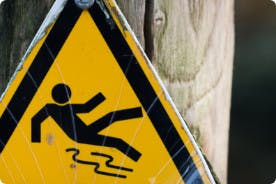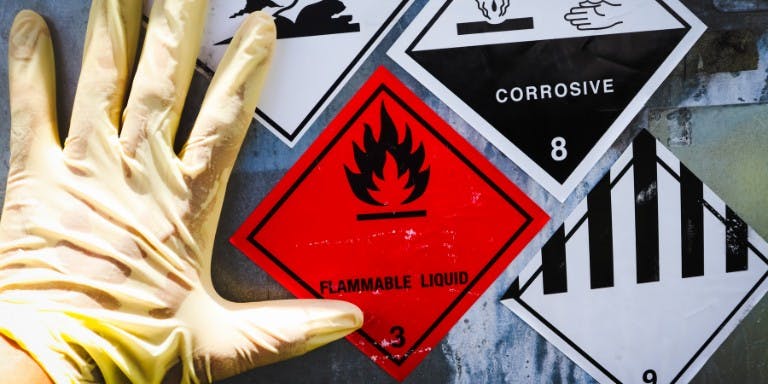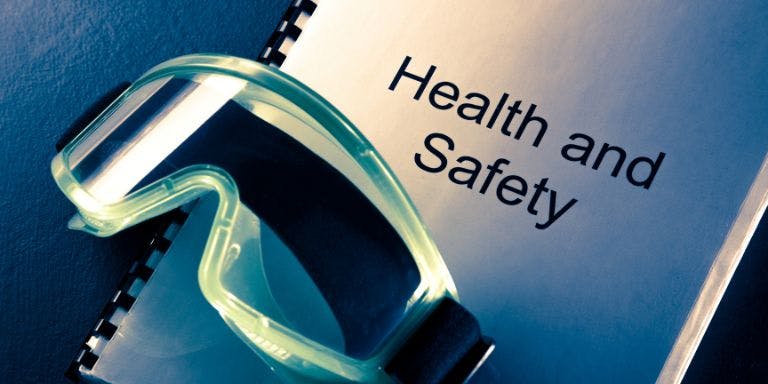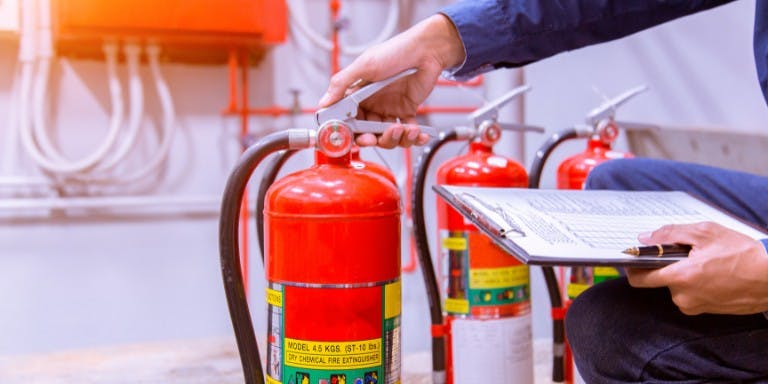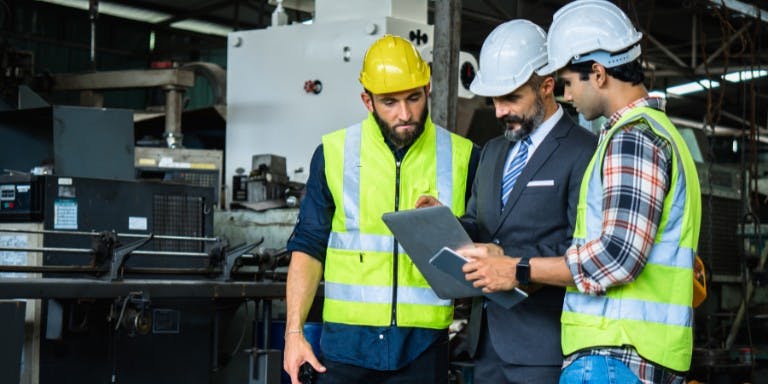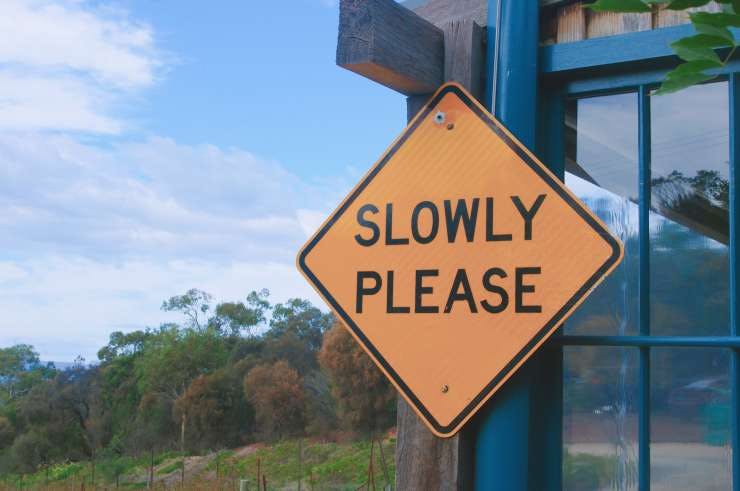First published on Friday, March 18, 2022
Last updated on Thursday, March 13, 2025
Jump to section
- What are my legal obligations as an employer?
- Key legal requirements
- Common causes of accidents in the workplace
- Steps you should take to prevent fatal accidents
- What should I do if a fatal accident occurs?
- What are the consequences for employers?
- The importance of compliance
- What are the best practices for building a safe workplace culture?
- Preventing fatal work accidents with BrightSafe
Workplace fatalities are a serious concern for business owners across the UK. Each year numerous workers lose their lives due to accidents that could often have been prevented with the right safety measures. As an employer, it’s both your moral and legal responsibility to keep your employees safe.
According to the RIDDOR, (Reporting of Injuries, Diseases and Dangerous Occurrences), there were 136 workplace fatalities recorded in 2022/23. These statistics have risen since previous years, and only highlight the pivotal importance that safety protocols play in saving lives.
In this article, we’ll explore the legal obligations of employers, the common cases of workplace accidents, and practical steps to create a safer work environment that helps protect your workforce.
What are my legal obligations as an employer?
Ensuring a safe working environment is not just a moral duty, but a legal requirement for employers in the UK. The cornerstone of workplace safety legislation is the Health and Safety at Work Act 1974, which mandates that employers must protect the health, safety, and welfare of their employees and others who might be affected by their business activities.
Key legal requirements
Health and Safety at Work Act 1974
Employers must ensure, as far as reasonably practicable, the health, safety, and welfare of all employees
This includes providing safe systems of work, safe use of equipment, and adequate training and supervision
Management of Health and Safety at Work Regulations 1999
Employers must conduct regular risk assessments and implement measures to mitigate the identified risks
The Management Regulations require employers to appoint competent people to help them implement safety arrangements.
Reporting obligations under RIDDOR
The Reporting of Injuries, Diseases and Dangerous Occurrences Regulations 2013 (RIDDOR) requires employers to report certain serious workplace accidents, occupational diseases, and specified dangerous occurrences
This ensures that the HSE can investigate, and employers can take action to prevent future incidents
See Health & Safety at Work, and What is the What is the Health and Safety at Work Act 1974? for more about health and safety in the workplace.
Common causes of accidents in the workplace
It’s especially important for you to know what causes fatal accidents at work so you can prevent them. Jobs in construction, manufacturing, and farming are especially risky because of the nature of the work involved.
Falls from height are the leading case of workplace fatalities. In 2023/24 alone, 36% of workers died from falling from heights. Ensuring works at height are planned, and the appropriate access equipment (e.g. scaffolds, ladders, mobile elevated working platforms) is used for each task is a vital step that can significantly reduce these incidents.
Being struck by moving/flying/falling objects is another common one. Implementing strict safety protocols and wearing appropriate personal protective (PPE) equipment are essential.
Vehicle related incidents, involving forklifts, trucks and other vehicles are common in many industries. Regular vehicle maintenance and proper training for operations can help prevent these accidents.
Exposure to hazardous materials can lead to fatal injuries, making proper handling, storage and disposal of these substances critical. Also, improper training can cause accidents, as people might fail to use equipment correctly, or follow the right safety procedures. It’s for this reason why it’s crucial to have regular and thorough training programs in place for everyone.
Steps you should take to prevent fatal accidents
To prevent fatal accidents at work, you need to be proactive and committed to safety at every level of your business. Here are some key steps you should take:
Conduct risk assessments and safety audits to help identify potential hazards and implement measures to mitigate them
Establish clear safety protocols and ensure everyone is trained to follow them. Regular safety training sessions and refreshers are crucial to keep safety at the top of mind
Ensure all equipment is regularly maintained and inspected to prevent malfunctions that could lead to accidents. Proper maintenance can significantly reduce the risk of equipment-related incidents
Promote a safety-first culture. Encourage employees to report hazards and near-misses, and involve them in safety planning and decision-making
What should I do if a fatal accident occurs?
Despite best efforts, fatal accidents can still occur. Knowing how to respond promptly and effectively is crucial for minimising further risks and supporting those affected.
Immediate actions
You’ll need to first secure the area to prevent additional injuries. Then ensure that no further risks are present, so that the site is safe for emergency responders.
You might not always know right away if an accident is fatal, so it’s important to do everything you can to ensure paramedics and other professionals can respond quickly.
Notify the authorities
Contact the Health and Safety Executive (HSE) and the police as soon as possible. Follow legal requirements for reporting the incident under RIDDOR.
You’ll then have the option to download a copy for your own records.
Investigate the accident
Carry out an internal review to determine the cause of the accident and make sure you cooperate with inspections by the HSE and other relevant authorities.
Supporting the family and affected employees
Provide grief counselling and support for the family of the deceased. And try to offer support and communication with other employees affected by the incident, including access to an Employee Assistance Programme (EAP).
What are the consequences for employers?
When a fatal accident occurs in the workplace, the consequences for employers can be severe, both legally and financially. Understanding these impacts is crucial for ensuring compliance and mitigating risks.
Legal consequences
Employers found to be in breach of health and safety regulations may face serious fines. Under the Health and Safety at Work Act 1974, fines can reach up to £10 million for serious breaches.
In cases of extreme negligence, employers can also be charged under the Corporate Manslaughter and Corporate Homicide Act 2007. Convictions can result in unlimited fines and irreversible reputational damage.
Families of deceased workers can claim compensation for the pain and suffering experienced by the event, loss of financial support, and funeral expenses. Compensation amounts can vary, but bereavement awards are usually around £15,120. Additional claims for loss of services and dependency can significantly increase the total compensation awarded.
Other consequences
The human cost of workplace fatalities includes the emotional and psychological impact on the deceased’s family and colleagues. This can obviously affect workplace morale and productivity. There are also legal fees and potential increases in insurance premiums to think about.
The total cost of workplace injuries and ill health in the UK was estimated to be £20.7 billion in 2021/2022.
The importance of compliance
These points show just how crucial it is to follow health and safety regulations to reduce risks. Regular safety audits, employee training, and fostering a strong safety culture can help prevent accidents and protect everyone from the severe consequences of workplace fatalities.
What are the best practices for building a safe workplace culture?
Building a safe workplace culture is key to preventing fatal accidents and ensuring everyone’s well-being. Encourage your employees to report safety concerns without fear of reprisal, which fosters an open and continuously improving environment. Regular safety training and certifications help keep everyone up-to-date with the latest protocols and practices.
Leadership plays a crucial role in promoting workplace safety by modelling safe behaviours and regularly communicating the importance of safety. Plus, using health and safety software can streamline risk assessments, incident reporting, and compliance tracking, helping to identify potential hazards in real-time.
By adopting these best practices, employers can create a proactive safety culture that prioritises the health and well-being of all employees, ultimately reducing the risk of fatal accidents.
Preventing fatal work accidents with BrightSafe
Managing health and safety at work can sometimes feel a bit overwhelming, but don’t worry—BrightSafe is here to help!
BrightSafe makes it easy to protect your business from over 600 health & safety risks. With real-time hazard reporting, you can reduce risks before they become problems. Plus BrightSafe ensures compliance with an accurate digital audit trail, so you can rest easy knowing you’re covered.
Access CPD-accredited online health and safety training, stay updated with the BrightSafe app, and get 24/7 support from qualified health and safety experts, all in your pocket!
Ready to enhance your workplace safety? Book a demo today to see BrightSafe in action.

